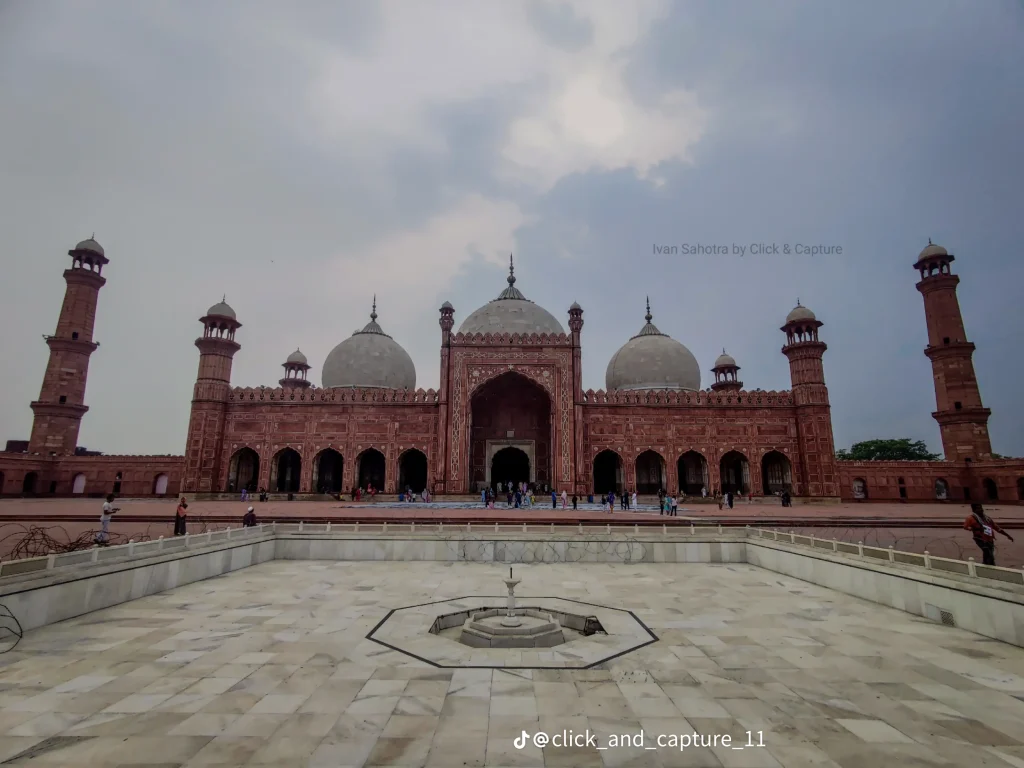The Badshahi Mosque, located in the heart of Lahore, Pakistan, stands as one of the greatest architectural wonders of the Mughal Empire.
Built in 1673 by Emperor Aurangzeb Alamgir, it remains a breathtaking symbol of Islamic art, Mughal grandeur, and spiritual peace.
🏰 Historical Background
The mosque was commissioned during the golden era of the Mughal dynasty.
It was not only a place of worship but also a reflection of the empire’s strength, devotion, and love for fine art.
For more than 300 years, the Badshahi Mosque has witnessed the changing tides of history — from royal prayers to the independence of Pakistan.

Made of red sandstone and decorated with white marble, the mosque is a masterpiece of Mughal architecture.
Its four towering minarets and three large domes create an unforgettable sight, especially when lit up at night.
The vast courtyard can hold over 55,000 worshippers, making it one of the largest mosques in the world.
Every wall, dome, and arch tells a story of devotion, power, and timeless craftsmanship.
🌙 Spiritual Significance
Beyond its beauty, the Badshahi Mosque represents peace, unity, and faith.
It has become a sacred landmark not only for Muslims of Pakistan but for visitors from all over the world who admire its grandeur and serenity.
🕊️ Conclusion
Today, the Badshahi Mosque stands tall as a symbol of Pakistan’s heritage, Mughal history, and Islamic culture.
It reminds us that art and faith, when combined, create beauty that lasts forever.
📌 Tags
